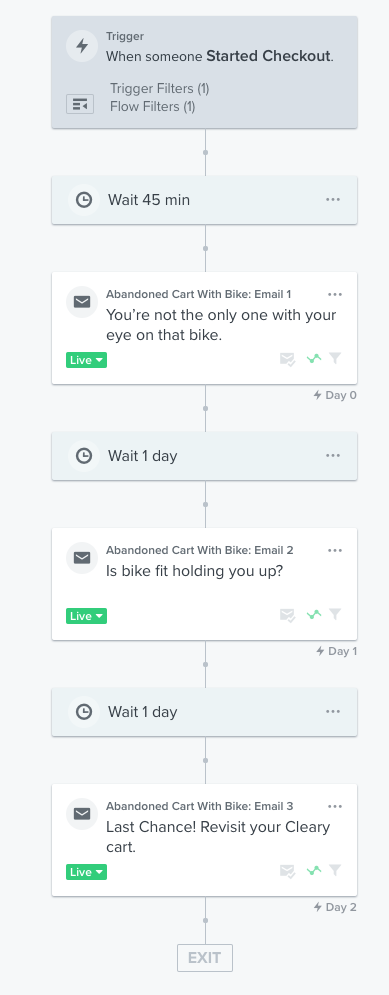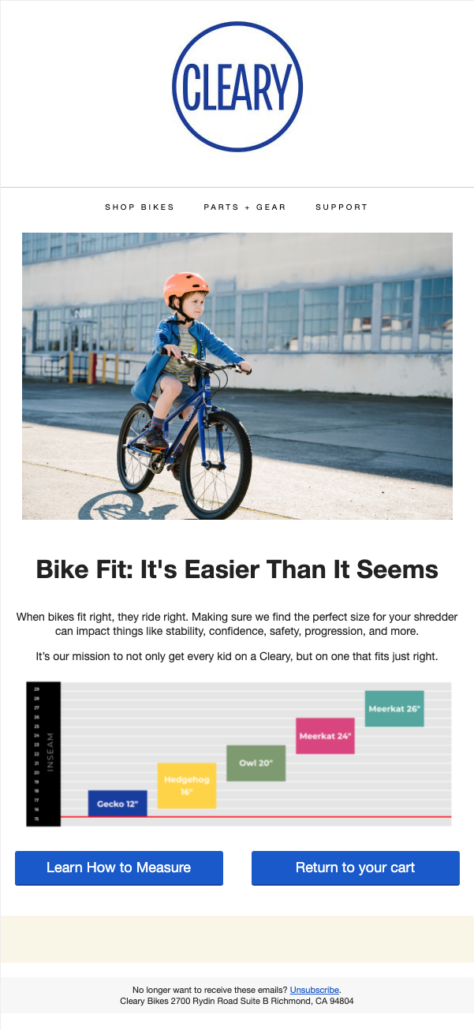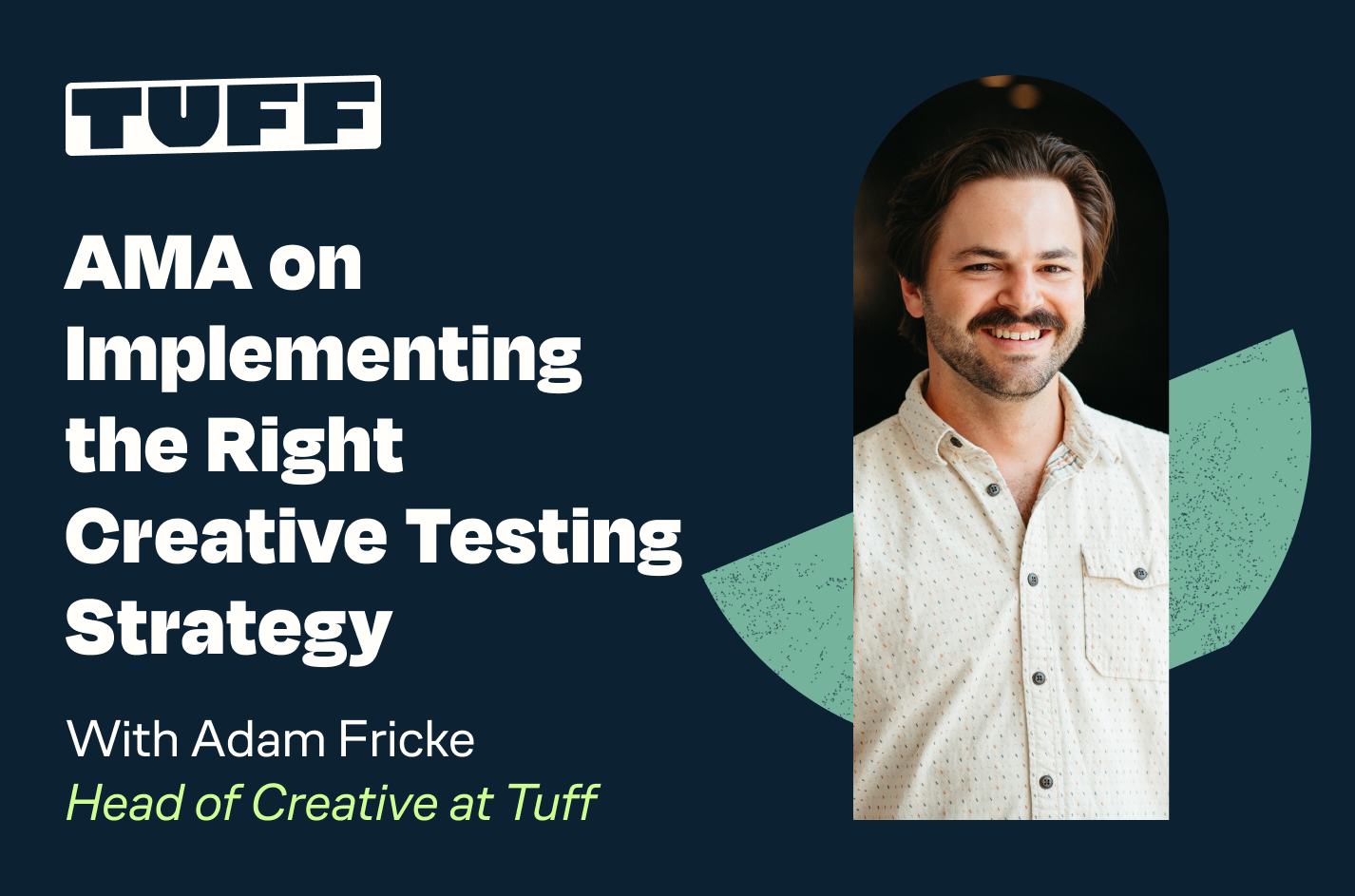They WANT to Hear From You: How to Use Email Drip Campaigns to Engage Your Best Customers
If you’ve been following Tuff for truly any amount of time, you know that we have a history of taking a hard stance on email marketing. Hyperboles aside, email is a channel that truly pulls its weight in a full-funnel marketing strategy. What’s more, your customers (and/or clients, leads, prospects) WANT to hear from you. Need some proof?
Did you know that 72% of customers prefer email as their main channel for business communication? Did you further know that 60% of consumers say they’ve made a purchase as the result of a marketing email they’ve received? (Source)
The short story: an opt-in is a sure sign from your customer that they want to hear you. When you honor that with timely, actionable, and relevant communication in their inbox, you energize your on-the-fence customers and engage your best ones. In other words: you create a real, scalable path to growth.
The catch: between e-blasts, marketing emails, transaction emails, list segmentation, and automation it’s hard to know where to start. We’ve got your back.
Disclaimer! As a growth marketing agency, we’re constantly preaching about prioritization; how to identify your highest-impact/lightest-lift activities so you can quickly implement, optimize, test, and use your findings to build more detailed, impactful strategies on other channels. Email is no different. This article digs deep into drip campaigns: in our opinion, one of the best ways to drive revenue using email. But! That’s not to say that e-blasts or automated flows might make the greater impact for you. Not quite sure where to start? Let’s talk.
The Vocab: Email Marketing 101
A solid email strategy starts with a clear understanding of your options. An important note: depending on where you’re getting your information, the following terminology may vary (or be used a bit differently).
E-Blast vs. Drip Campaign vs. Automated Flow
There are a number of different methods for emailing your customers that have opted into hearing from you. The first, and typically the most common is e-blasts. This is where most founders or marketers start: this is a one-off or a consistently sent email meant to keep your customers up to date on new content, product launches, and/or events. These are manual and hands-on—the content will change each time you send.
A drip campaign, meanwhile, is static, predetermined, and scheduled content based on pre-defined triggers. For example, a series of email that sends to someone who’s just created an account, abandoned their cart, or downloaded a white paper. The content of the series is catered specifically to the action that the user has taken. And while particularities of the content (like dynamic product content blocks based on the actual items in the user’s abandoned cart), the series itself is a fixed number of emails that eventually ends.
Finally, an automated flow is a series of emails that dynamically changes based on a user’s behavior (the distinction between a drip campaign and an automated flow is relatively subtle). For example, if a customer has indicated through a series of behaviors that they’re a top user of your app, you can program an automated email to encourage them to upgrade their subscription, leave a review, refer a friend, or take another higher-value action. Then, if that user ends up taking that action, the automation will either drop them out of the flow or put them into a new one.
While each type pulls its weight in a holistic email marketing strategy, above, they’re ordered from the simplest to the most complex. We recommend starting with e-blasts and maintaining a steady cadence while you build out drip campaigns. Once you’ve had an opportunity to really hone in on list segmentation, get super specific with user behavior patterns, and collect data on your open, click through, and unsubscribe rates, then (in our opinion) it’s time to dig into automated flows.
How to Build an Effective Email Drip Campaign
Drip campaigns are communications that meet a customer when they’re most engaged: right after they’ve taken a notable action. Before you write one subject line or begin to map out your campaign, it’s super important to get specific with your triggers.
Step 1: List Every Possible Trigger
No matter what kind of business you run (SaaS, B2B, B2C) your customer journey is stacked with actions for your potential customers to take. From the very first time they discover you, all the way through to conversion, they’ll (likely…ideally!) be seeing and clicking on your ads, finding new ways to learn about you, engaging with ways to save, and ultimately, buying. Here are just a handful of examples:
- Placing an order
- Attending an event at your store
- Signing up for a webcast
- Registering for a report or white paper
- Abandoning a shopping cart
- Engaging with customer service
This is also the step during which you’ll do the heavy lifting when it comes to segmentation.
We could (and probably will!) write a full extra article on segmentation but the short story: if your lists aren’t thoughtfully and properly segmented, the rest of your strategy will have a hard time getting off the ground.
Step 2: Determine Where Each Trigger Fits in Your Marketing Funnel
Where these leads sit in your funnel helps dictate how you message them and what actions you call them to take. Here are the above examples organized by where they fit in the funnel:
Top of Funnel → signing up for a webcast, registering for a report or white paper
Middle of Funnel → attending an event at your store, engaging with customer service
Bottom of Funnel → abandoning a shopping cart
Step 3: Decide How Often to Send
Quick tip: you can send more emails than you think you should. Customers WANT to hear from you. Our tactical recommendations differ depending on industry (eCommerce companies can get away with sending at a higher cadence while B2B or SAAS companies should resist sending more than five emails a month).
Lay out your email cadence depending on how long your sales/conversion process usually takes and/or how long it will take to tell a complete story about why they should purchase or subscribe based on where they are in the funnel.
A quick blueprint to help you find your starting line:
- Plan to include 5 – 10 emails in your campaign
- Send 4 days apart if you’re B2C, 7 if you’re B2B
Step 4: Create Your Email Content
An email drip (as well as an automated flow) is a story — how do you tell a full story from end to end? Again, this messaging will vary greatly depending on where your user is in the funnel.
Users in the top of your marketing funnel will resonate best with heavy education (how does your product/service make their life better), a word from experts, general tips for how easy it is to integrate your product/service into their life. Consider crafting all emails with the primary CTA of “Learn More.”
Users in the middle of your marketing funnel are in the consideration phase. Core messaging here should be focused on how your product or service tactically works, insights or experiences from real users, and press mentions. The primary CTA here is get in touch with customer service or start shopping.
Users in the bottom of your marketing funnel are nearing conversion and actively looking to buy from you or a competitor. Core messaging here should center on your brand story—why they should believe in your company and how you outpace the competition. Here, we’ve found that personal notes from founders, explaining why and how they’ve built the company in all its particularities can make an impact. The primary CTA here is to place an order, subscribe, or whatever your ultimate conversion action is.
Step 5: Launch, Check In. Optimize. Rinse & Repeat.
No matter which email strategy you adopt and implement, it’s critical to continuously check in on your drip campaigns to increase performance and, overtime, drive more revenue. Here’s a quick cheat sheet outlining the best metrics to scrutinize and what to try to elevate their performance:
Deliverability Rate
- What it is: The number of emails accepted by the recipient’s server.
- Why it might be underperforming: You bought a list of emails (BIG no no), you don’t have a clear unsubscribe rate, or you’re using spammy/overly-salesy language.
- How to improve it: Continuously clean your lists, delete any addresses that bounce or are invalid, and ensure the unsubscribe button is clearly visible.
Open Rate
- What it is: The percentage of recipients that open your email.
- Why it might be underperforming: Your email has landed in the spam folder, it’s hard to tell who you (the sender) is, or your subject line is uninspiring.
- How to improve it: Use simple A/B subject line tests to see what kind of language your audience resonates with.
Click-Through Rate (CTR)
- What it is: The percentage of people that open your email and also click through to a link.
- Why it might be underperforming: Your CTA buttons are too far down the email, it isn’t clear to your recipients what kind of action you want them to take, or the link isn’t compelling enough.
- How to improve it: Test different text lengths, button styles, and actionable copy to encourage a click.
Conversion Rate (CVR)
- What it is: The percentage of people that click through to your site and also make a purchase.
- Why it might be underperforming: The experience of your email doesn’t match the experience a user has when they hit the site.
- How to improve it: Ensure a smooth/consistent experience from your email to your site.
There’s truly no gilded road to email success—the best strategies start with the questions, “what’s going to be the most impactful for my business and my customer/prospect?” Sometimes, this can feel a bit daunting. The good news: we’ve got your back! Ready to fire up some effective drop campaigns? Let’s talk!

Fresh from the creative world, Elle brings a strong left brain/right brain balance to every new business challenge she meets. Her hunger to learn and unflinching willingness to get her hands dirty combine to make her the person that never runs out of questions. Happen to catch her away from her laptop? She’s likely flecked with dirt kicked up by her mountain bike.







